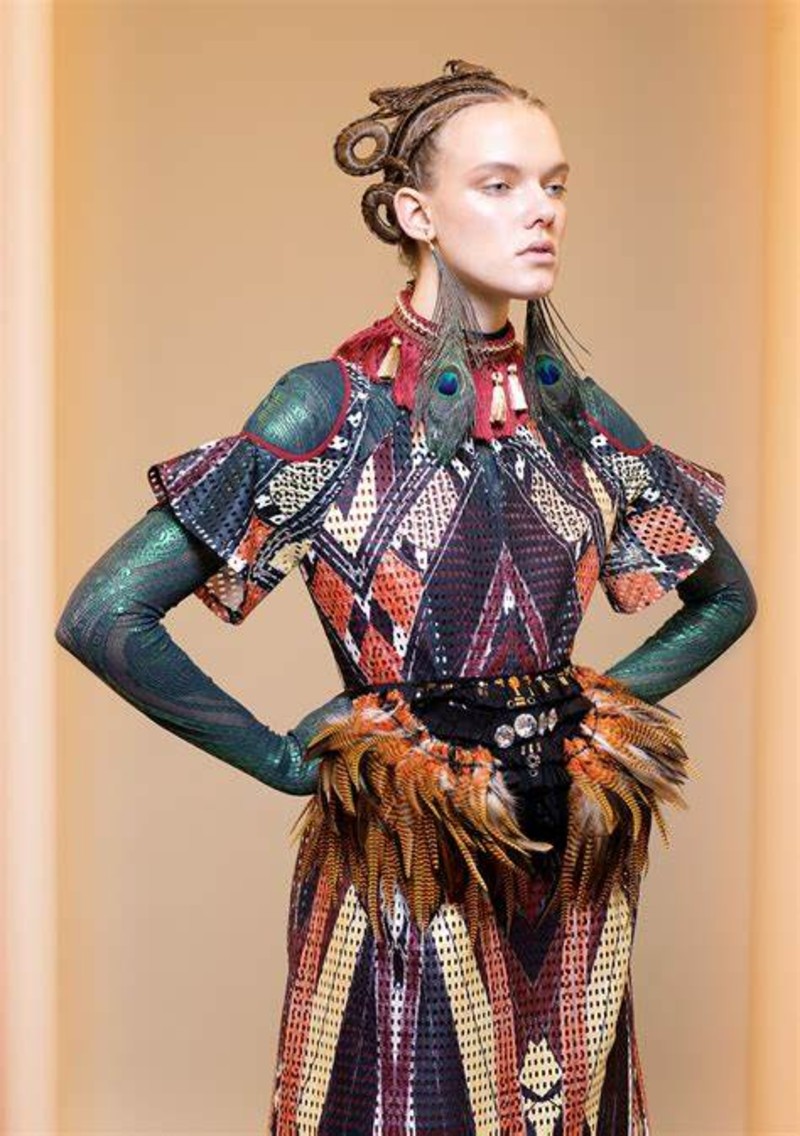
Somarta
Somarta, a brand created in 2006 by Tamae Hirokawa, a Japanese fashion designer born in 1976

Somarta is a brand created in 2006 by Tamae Hirokawa, a Japanese designer born in 1976, a favorite pupil of Issey Miyake . Strongly influenced by the most diverse cultures, Miyake’s protégé has opted for an impressive, sumptuous, hyper-decorated collection, where the element-detail becomes the absolute protagonist.
She joined Issey Miyake Co., Ltd. after graduating from Bunka Fashion College with a BA in Apparel Design Technique in 1998. As a stylist, she took responsibility for the collection line of Issey Miyake Men and Issey Miyake. SOMA DESIGN was born in March 2006 to create fashion, graphic design, sound and art direction. The SOMARTA fashion brand was launched at the same time.
Inspired by the universal desire to adorn skin with embellishments, Hirokawa has experimented with the notions of light and shadow to create her iconic pieces ranging from leotards and tights to gloves and stockings. Made possible by the integration of a new production technology with digital programming, the Skin series combines a high-density knitting method with a seamless technology that allows you to create internal structures and patterns.
Somartha. “The pieces are completely seamless,” Hirokawa explains
“The pieces are completely seamless,” explains Hirokawa, head of knitwear at Issey Miyake before founding his label. “Based on the structure of the body, we design a knit structure that looks lighter in some areas and darker and denser in others.” It’s like applying makeup to articulate and emphasize the muscular structure of the body.’
The philosophy has also been applied to less form-fitting pieces, such as suits and jackets, where patterns and designs are woven directly into the fabric and then assembled without seams to improve fit on the body.
“I actually combined two methodologies, the Western and the Japanese”
‘I actually combined two methodologies, Western and Japanese, to create these pieces. Traditional kimonos are constructed by complementing the arrangement of flat fabrics, while Western garments are cut from patterns. In this Skin series, the inner and outer pieces of each garment are created together. The same goes for the pockets, which we program the machine to make at the same time. They are completely united.’
While all of this may sound very complicated, Hirokawa says his methods are actually quite simple. “We use a wooden punch card along with other codes to create variations in the knitting process”

Sorelle Gori (1930 - )

